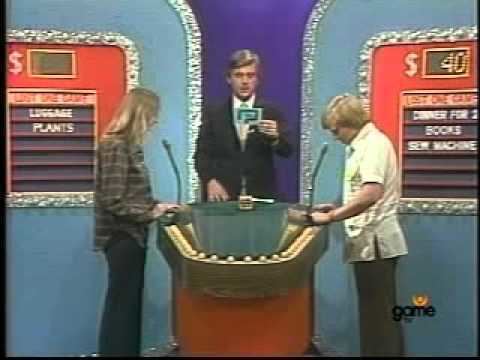6.8 /10 1 Votes6.8
First episode date 1979 | 6.8/10 IMDb | |||||||||||||||||||||||||||||||||
 | ||||||||||||||||||||||||||||||||||
Similar Headline Hunters, Definition, Pitfall, Front Page Challenge, Bumper Stumpers | ||||||||||||||||||||||||||||||||||
The mad dash episode 9051
The Mad Dash is a television game show created by Sidney M. Cohen which first appeared in 1978 on Canada's CTV network and ran until 1985. The series proved to be a family favourite based on Canada's BBM ratings, and was also popular in parts of the northern United States, where CTV affiliates were available to Americans living near the Canada–United States border, both over the air and via cable. Pierre Lalonde was the MC, and Nick Holenreich was the announcer for the show, which was taped at the studios of CFCF-TV in Montreal, with production moving to CFTO-TV in Toronto in 1983. This classic series is included in the collection of Canadian icons in the 2006 feature film Souvenir of Canada based on the book by Douglas Coupland. The series was later rerun on GameTV in Canada, from 2007 to 2010.
Contents
- The mad dash episode 9051
- The mad dash pot of gold dash
- Gameplay
- Common spaces
- Mini Dash
- Other versions
- References
The mad dash pot of gold dash
Gameplay
Two pairs of contestants competed in a giant board game, laid out as a winding path across the studio floor. Each team chose one member to be the "Dasher," moving on the board, and one as the "Roller," answering questions at the host's podium. Both Dashers began on the Start space at one end of the board.
The host asked a series of multiple-choice toss-up questions to the Rollers, and the first to buzz-in with the correct answer rolled an oversized six-sided die. A miss gave the opponent a chance to answer and steal the roll. Five of the die's faces were marked with pips to indicate numbers from 1 to 5, while the sixth face showed a dollar sign. If a number came up, the team's Dasher moved ahead that many spaces. The dollar sign added $10 to the team's bank and gave a free roll; if three consecutive dollar signs came up, the team was credited with $50.
In order to win, a Dasher had to reach the Win space at the end of the path by exact count. If the Roller rolled a number higher than the number of spaces needed to reach Win, the Dasher had to use the excess spaces to back up from Win. (E.g. a roll of 3 with the Dasher one space from Win resulted in him/her two spaces away.) When a Dasher reached Win, that team kept all cash and prizes they had banked during the game. If they had banked nothing, the Roller rolled the die once and received either $100 for a dollar sign, or $10 times the number rolled.
The winning team remained on the show until they either were defeated or won a total of 10 games, whichever came first. Defeated challengers immediately played a second game against the same team, but were dismissed from the show if they lost again.
Spaces on the board awarded cash or prizes, or affected the movement or gameplay in various ways. Landing on cash or a prize credited it to the team's bank; if a Dasher landed on an already-banked prize, the team was given an extra roll instead. One space would double a team's entire banked cash total. Some spaces remained constant, while others changed from one game to the next. Spaces took immediate effect, regardless of whether a Dasher landed on them while moving forward or backward.
Common spaces
Mini Dash
If a game ended without leaving enough time at the end of the episode to start a new one, one or more audience members were called to the stage, one at a time, to play a Mini Dash. Each member played for a different prize and chose one of five envelopes, each containing a different set of three questions; two correct answers were needed to win. On some episodes, an "instant win" and "instant loss" were hidden in two of the envelopes instead of questions.
Other versions
The Mad Dash has also been produced internationally. The most successful new version was produced for Polish television (Duety do Mety, literally translated to "Duos to finish line") in 2002.
